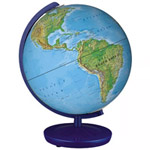Global Integrative Studies, School of

School of Global Integrative Studies: Faculty Publications
Document Type
Article
Date of this Version
2019
Citation
International Journal of Osteoarchaeology (2019) 29: 452–468
doi: 10.1002/oa.2782
Abstract
In this contribution, we present a methodological approach to the identification of pre‐Columbian Caribbean fisheries and examine the interrelationships of exploitation according to size for eight fish families, in a diachronic perspective for the Lesser Antilles. Based on the principles of size and growth allometries, biometric repositories have been reconstructed for modern families that represent different ecological environments: Holocentridae, Serranidae, Carangidae, Lutjanidae, Haemulidae, Scaridae, Acanthuridae, and Scombridae. The measured fish bone elements were selected based on their robustness and potential for recovery at archaeological sites. This resulted in a sample size totaling 563 modern osteological specimens, which provided reconstructed standard, fork, total lengths (SL, FL, TL), and body mass (BM) of fish. The calculations were based on 21,437 measurements and 5,889 log‐linear and exponential equations. These formed the comparative baseline for the archaeoichthyofaunal bone samples. The zooarchaeological ichthyofauna studied by Funding information the authors derive from 142 assemblages and 11 major islands following the eastern Fondation Fyssen; ATM Biodiversité of MNHN and western arcs of the Lesser Antilles: Saint‐Martin, Barbuda, Antigua (including Long Island), Guadeloupe (Grande‐Terre, Basse‐Terre, Les Saintes, Islets from Cul-de‐Sac‐Marin, la Désirade, Petite Terre, and Marie‐Galante), and Martinique. Previous zooarchaeological analyses by the same authors identified 1,050,649 specimens of which 397,803 were fish. Among them, the skeletal remains of Holocentridae, Serranidae, Carangidae, Lutjanidae, Haemulidae, Scaridae, Acanthuridae, and Scombridae bones were measured, and biometric constants were applied. During the pre‐Columbian period in the Caribbean, the length distribution curves possibly represent anthropogenic selections that follow statistical normal, Poisson, or bimodal distributions. Coral reef fish became increasingly important in subsistence, but fish sizes from all ecosystems decreased over time. From the estimates of zooarchaeological fish size and the ethnoarchaeological, historical, ethnographical, and biological sources, it was possible to infer the various strategies and equipment used by the Amerindian fishermen. It is likely that the same triad of practices (hooks/lines, nets, and traps) survived the passage of time and emerged to be among the most popular fishing techniques used by modern fishermen in the Lesser Antilles.
Included in
Animal Studies Commons, Biological and Physical Anthropology Commons, Geography Commons, International and Area Studies Commons


Comments
Copyright 2019, Wiley. Used by permission.